Easter in Germany is an joyous holiday that is celebrated with great enthusiasm and a range of traditions that have been passed down through generations. Colourful Easter eggs, traditional bonfires, and a wide variety of delicious foods are just a small part of what makes this festive occasion so special. Whether it’s by decorating Easter trees or baking Easter cakes, Germans embrace this holiday with open arms. Additionally, the holiday is marked by a plethora of events and activities, such as Easter markets, parades, and church services.
During the Easter season in Germany, streets and homes are decorated with colourful ornaments, most notably with decorated eggs, symbolizing new life and resurrection. German craftsman producing and selling painted Easter eggs is a common sight in many German towns and villages.
German churches hold special services during holy week and on Easter Sunday. Many church choirs will perform oratorios of Johann Sebastian Bach during their Easter service. Protestant churches usually hold sunrise services on Easter Sunday as an acknowledgement of the Resurrection.
What is celebrated during Easter
Christians celebrate the resurrection of Jesus at Easter. According to Christian belief, Jesus was crucified on Good Friday and rose again on Easter Sunday. For Christianity, Easter is the most important festival of the year.
Easter Sunday is actually the culmination of a series of traditional observations that start with Karneval or Fasching and the following Ash Wednesday (Aschermittwoch). After that, the holidays (“holy days”) of Palm Sunday and Good Friday lead up to Easter.
Important dates for 2024
| Holiday | Date | Information |
|---|---|---|
| Palm Sunday / Palmsonntag | 2024-03-24 | The Sunday before Easter. The feast commemorates Jesus’ triumphal entry into Jerusalem. It is also the start of the Holy week or Karwoche |
| Maudy Thursday / Gründonnerstag | 2024-03-28 | Maundy Thursday or Holy Thursday is the day during Holy Week that commemorates the Washing of the Feet and Last Supper of Jesus Christ with the Apostles, as described in the canonical gospels |
| Good Friday / Karfreitag | 2024-03-29 | Karfreitag |
| Karsamstag | 2024-03-30 | More info |
| Easter Sunday / Ostersonntag | 2024-03-31 | Ostersonntag |
| Easter Monday | 2014-04-01 |
Other Easter Foods
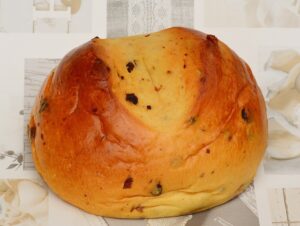 Delicious Hefezopf, Hefekranz and Easter bread (das Osterbrot) in most bakeries. Made with yeast dough, raisins and almonds. Eaten with butter. There is some great recipes available on Chefkoch.
Delicious Hefezopf, Hefekranz and Easter bread (das Osterbrot) in most bakeries. Made with yeast dough, raisins and almonds. Eaten with butter. There is some great recipes available on Chefkoch.
The closest you find to Hot Cross buns are Rosinenbrotchen
Brightly coloured boiled eggs and of course beautiful chocolate easter eggs can be bought at bakeries.
South African Easter Recipes
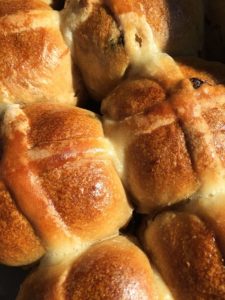
Easter Recipes
Here is a collection of Traditional South African Easter Recipes. To submit your own recipes to be published on this website, please use this form Roast
Food and Traditions
Food, particularly bread, is an important part of Easter in Germany. Traditional German bakeries offer Easter-inspired culinary delights such as sweet Easter bread, known as Osterbrot. Many regions have their own distinct Easter dishes, for instance, green sauce usually served with boiled eggs is a delicacy typical for the state of Hessen during the Easter period.
Here is a list of food traditionally eaten in Germany over the Easter period, as well as the traditions observed
Palm Sunday
Palm Sunday is the Sunday before Easter and also the start of the holy week or Karwoche.
Processions with people carrying palm branches or symbolic bouquets (Palmbuschen) and singing hymns.
Palmbuschen are made from 7 evergreen plants
Gründonnerstag:
Gründonnerstag sounds like green Thursday although it is derived from the old German word greinen, which means crying. Thus many people celebrate Maudy Thursday by eating green dishes, such as the following:
– Seven herb soup / Sieben Kräutersuppe
– Chervil soup / Kerbelsuppe
– Eggs in green sauce / Eier in grüner Sauce
Karfreitag:
All Church bells are silent on Good Friday and many Families attend church services.
Many towns, such as Bensheim will host processions depicting the events of Good Friday.
Dancing is not allowed on Good Friday, neither are weddings. The shops are closed.
It is a tradition to eat fish at dinner with your family.
– Fish cakes with green sauce / Fishfrikadellen mit grüner Sauce
Ostersamstag:
In Northern Germany, people light Easter fires (das Osterfeuer) as a symbol of light in the darkness.
These fires are sometimes lit on Good Friday or Easter Sunday.
Ostersonntag:
Families come together to celebrate. They may go to church together and then have a big brunch or a festive dinner.
The main dish is often lamb.
Children hunt for Easter eggs.
– Colorful boiled eggs / Bunte Frühstückseier – served with Black Forest ham and Emmentaler cheese
– Easter bunny brioches / Osterhasebrioches
– Roast leg of lamb with juniper berry sauce / Lammkeule mit Wacholderbeerensauce
– Biennenstich cake. Click on this link for other Easter cake recipes
– Easter lamb cake
– Hefezopf
– German Sweat Bread nests
Ostermontag:
Easter Monday is a day of remembrance and reflection.
Easter Traditions
Ostermarkt
Easter markets are a wonderful place to buy hand-painted easter eggs, easer delicacies and decorations.
A list of easter markets can be found on Ostern-international, Ostern in Deutschland or simply search for Ostermark and your area.
Osterbrunnen
Public fountains are decorated with easter eggs.
The tradition began in the early 20th century.
Processions
- On Palm Sunday the entrance of Jesus into Jerusalem is recreated.
- Good Friday – Processions enacting the cruxification of Christ. One of the most popular processions takes place in Lohr
- Osterreiten – a procession on horseback that takes place on Easter Sunday to announce the resurrection of Jesus
Passion plays
The Passion Play in Oberammergau is performed every 10 years and is one of the most famous in Germany. In 1633 the Oberammergau villagers promised to perform the suffering, death and resurrection of Christ every tenth year, in so far as no one was to die of the plague anymore. The villagers were answered by God and therefore in 1634 the first Passion Play took place. The promise has been kept until today. The 42nd Passion Play successfully ran from 14 May to 2 October 2022, after having to be postponed in 2020 due to Covid. A list of popular passion play venues can be found on Passionspiele.info
Osterstrauch
People decorate dry twigs (Osterstrauch) or trees with colourful eggs. One of the biggest Ostereierbäume can be seen in Saalfeld with almost 600 handpainted eggs.
A great activity for kids (also the grown-up ones) is to paint your own easter eggs. They are hung on trees, used for table decorations, or can be given as gifts.
Painting Eggs
A great activity for kids (also the grown-up ones) is to paint your own easter eggs. They are hung on trees, used for table decorations, or can be given as gifts.
Eggs hold associations with spring and new life. Early Christians made the egg a symbol of the resurrection and the empty shell a metaphor for Jesus’ tomb
Easter Bonfires
The Osterfeuer/Osterbrände is lit on Good Fieday to light up the darkness following the death of Jesus. In some regions fires are lit on Easter Sunday.
Easter Bunny
The concept of a bunny bringing eggs may have originated from German folklore. The first mention of the Osterhase dates back to an essay from Georg Franck von Franckenau in 1682.
Hiding Eggs
The custom of hiding and hunting for Easter eggs originated in Germany. According to folklore, men would hide eggs for women and children to find, this symbolised the resurrection, in which the empty tomb was discovered by women.
The Easter egg hunt may have originated from the idea of celebrating the end of Lent, a period of fasting and abstinence, by engaging in a joyful activity. The eating of eggs was forbidden during Lent.
Osterlamm
It is traditional to eat lamb on Easter Sunday. The lamb is the symbol of Jesus Christ, the Lamb of God. It is also popular to eat a Sweet Easter lamb, made from cake and powdered sugar.
Vocabulary
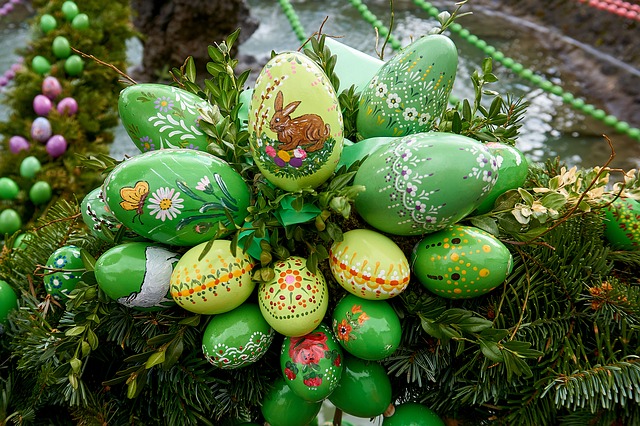
| Happy Easter | ich wünche dir frohe Ostern |
| Easter bunny | der Osterhase |
| Easter egg | das Osterei |
| Easter lamb | das Osterlamm |
| Chocolate bunny | der Schokohase |
| Daffodils | die Osterglocke |
Related content
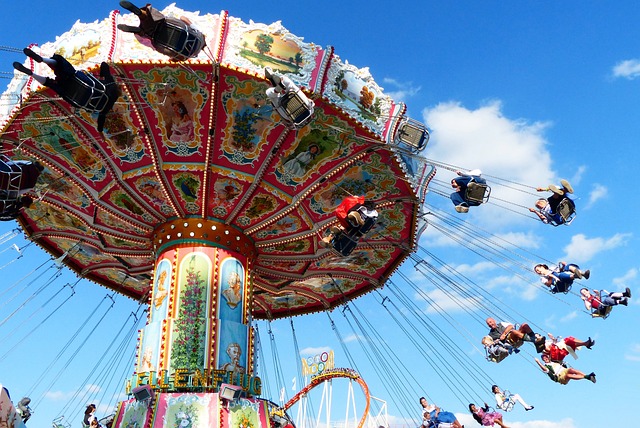
Yearly Festivals and Events in Germany
We compiled a list of annual traditional festivals and events in Germany, that we believe will provide you with an exciting array of activities and
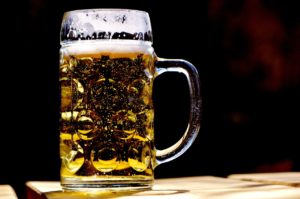
Starkbier
Starkbier is as the name suggest a strong beer. It is a legal generic designation for beers in which the original wort content is over 16 °P (degrees Plato). The alcohol level is between 5% and 10%. Most of them are seasonal.
In Munich, Starkbierzeit is called the 5th season. It is during Lent (From Ash Wednesday 14.02.2024 to Easter).
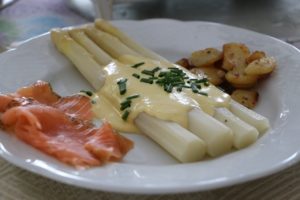
Spargel – the German white gold
Bis Johanni – nicht vergessen – sieben Wochen Spargel essen! The Asparagus season in Germany starts towards the end of April and ends on the



You must be logged in to post a comment.